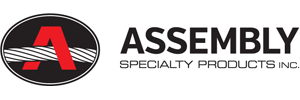Guide to Wire Rope
MENU
- Structural Wire Rope Applications
- Computer-Assisted Design and Detailing
- High Strength Structural Strand
- Custom Finishes
- Pre-stretching
- Striping
- Measuring Wire Rope
- Corrosion Protection
- End Terminations
- Attaching Sockets
- Proof loading
- Order Specifications
- Wire Rope Selection
- Rotation-Resistant Ropes
- Specialized Wire Rope
- Wire Rope Handling and Installation
- Standard Operating Practices
- Wire Rope Inspection
- Technical Info & Specifications
Structural Wire Rope Applications
Television and Radio Towers
Early tower installations for radio broadcasting offered problems similar to those met in guying stacks, poles, derricks and similar structures. Guys for these moderate-height structures were commonly made of regular wire rope.
The advent of television and FM broadcasting, however, created a need for towers of greater height. In fact, the idea of a tower being 2,000 feet tall or more is no longer uncommon. The guying of these larger towers presented problems not faced with the smaller towers. For example, wind and ice loads must now be considered, both during installation and tensioning after erection.
Structural strand is now used for guy systems. Where larger diameter wire rope was once used, structural strand, with its higher modulus of elasticity and lower diameter-to-strength ratio, allows for smaller diameter guys. This reduction in diameter reduces ice and wind loads, which may be important in the overall design of the tower. Structural strand’s higher modulus of elasticity (less stretch) also allows for less take-up of the bolts during tensioning.
Uniformity in tensioning and deflection is necessary for tower guys. Therefore, it is important that the structural strand guys have minimal constructional stretch, a high modulus of elasticity and accurate length measurements. Pre-stretching the strand eliminates most of the constructional stretch and contributes to the strand’s high modulus of elasticity. Proof loading may be used to prove the security of end attachments. Field tensioning of the guys is facilitated by our ability to supply precisely measured and completely documented strand assemblies.
Structural strand also is used for boom pendants on excavating equipment.
Bridges
Suspension Bridges
Suspension systems are ideal where long spans are required, as in highway and pedestrian bridges, supporting conveyors, pipe lines and overhead passageways in industrial plants, and overhead crossovers above railroads.
When appearance, durability, utility and ease of construction are considered, suspension bridges are often the most economical to build. For example, flood damage to exposed piers is eliminated and difficult or dangerous pier foundations can be avoided with a suspension-cable construction. Often the entire problem area is spanned; the foundations can be located at economical installation points where they are least likely to be damaged. Great clearance is obtained since the supporting structure is above the floor and has no intermediate supports.
Stiffening trusses may be incorporated into the design of foot bridges and similar bridges, where they also may serve as hand railings. These trusses add relatively little to the cost of the structure, and they ensure a bridge free from disturbing floor movement.
Structural strand and wire rope is used for the main cables, suspenders and wind cables of highway, pedestrian and pipeline suspension bridges. Structural strand is manufactured through 5 1/2” diameter and wire rope up to 7” diameter.
Pre-stretching greatly reduces the constructional stretch of the structural strand or wire rope and improves the overall elastic stability. While in the pre-stretcher, overall lengths and intermediate tower and suspender points can be measured to close tolerances under prescribed tensions.
Tied Arch Bridges
In a tied arch bridge, the bridge deck is suspended by structural strand or wire rope hangers hung from a steel or concrete arch. Tied arch bridges normally cross short to medium spans. Structural strand has been used in tied arch bridges having span lengths of more than 1,000 feet.
Cable Stayed Bridges
The cable stayed bridge is a relatively new type of bridge, in which structural cables radiate diagonally from one or more towers or pylons to a connection point on the bridge girder. This bridge form allows a very efficient use of material, which results in a lighter structure and less massive foundation.
Cable stayed bridges have been built with a main span as long as 2,300 feet between the towers. Frequently, the limiting constraint on span lengths is the permissible height of the pylon.
Galvanized helical structural strand has been specified for cable stays as have several other cable configurations. Various types of socket attachment and corrosion protection systems have been used with varying degrees of success. Zinc-poured attachment of sockets is recommended. Corrosion protection systems are too varied and rapidly evolving to recommend a particular system.
Vertical Lift Bridges
In a vertical lift bridge, the movable span is balanced by counterweights located in the towers at each end of the span.
Each corner of the span is connected to the counterweights by sets of large wire ropes which operate over parallel-grooved sheaves at the top of the towers. Using powered winch drums, smaller wire ropes raise and lower the movable span.
The lengths of the counterweight ropes in each of the four corners must be matched closely to ensure equalization of tension. Uniform stretch also is an important factor. In vertical lift bridges where counterweight clearances are limited, ropes should have minimal constructional stretch. Counterweight ropes can be pre-stretched to reduce constructional stretch, and measured under tension to ensure closer control of rope lengths. Normally, operating ropes do not require pre-stretching since minor length adjustments can be made at the drums.
Cable Roof Structures
In recent years, design and construction of structures with cable-supported and cable-suspended roofs has increased. As opposed to other methods, cable roof structures permit economical, column-free construction over large spans. Cable roofs also decrease the stresses on the superstructure, supporting members and the foundation, thereby permitting the use of fewer and lighter materials. Cable roofs offer a bold challenge to architects and structural engineers who seek new ways to utilize interesting techniques and materials.
A loose description of a cable roof structure is any roof structure which uses steel cables as load-bearing, structural elements. Most roofs fall into one of two categories: (1) cable-suspended; or (2) cable-supported.
A cable-suspended roof uses cables to directly carry the roof load. There are two variations of this principle: (1) cases where the roof deck is carried directly on the cable; and (2) cases where additional loads, such as ceiling frames, are suspended directly from and below the cable.
In a cable-supported system, the roof loads are generally carried by rigid structural members. In this case, the cables serve as added support.
The architectural forms of suspension roofs are numerous. If adequately treated in the conceptual design stage, structural suspension systems offer numerous architectural forms, not only for roofs, but for the entire building. The following are the most common types of suspension roofs.
Catenaries
The most elementary structural suspension system is a catenary, which is similar to that of a suspension bridge. This system usually requires end towers and abutments to resist the tension in the catenary and a stiffening structure to eliminate the flutter in the roof system.
Tents
This system consists of parallel assemblies or radial assemblies extending from one support point to various abutments, with the roofing material spanning between the assemblies. This system, in addition to its requirement of vertical posts within the covered space, makes no effort to solve the flutter problem. Essentially, the cables are sloping catenaries governed by the laws of statics.
Preloaded Catenaries
This system consists of a central tension unit connected to an exterior compression ring by radial cables. Preloaded catenaries are ideal where a clear span, free from central supports, is required. To eliminate flutter, a relatively heavy load of precast or poured-in-place concrete may be placed on top of the cables.
Grids
To avoid flutter without adding heavy weight, grids of interlacing cables are sometimes used to dampen the catenary assemblies. In some cases, these surfaces contain reverse curves (convex) created by cables having opposite curvatures; usually, these convex cables have an initial tension and mirror the concave catenary cables.
When flutter problem has been solved by placing a mass on top of the cables, such as precast concrete planks, this additional mass adds to the superimposed weight. Damped cables, on the other hand, do not require additional weight to avoid flutter.
A properly damped, suspension system, consisting of cables designed to resist all superimposed static loads, may be covered with a light roofing material.
A number of such suspension roofs and systems have been built, and they have demonstrated a complete absence of flutter and a high degree of rigidity. Though much lighter in weight, their rigidity is comparable to, or higher than, conventional structural elements of steel trusses or girders.
Tensioned Fabric Roofs
Related to grid roofs with reverse curvature are tensioned fabric roofs. In this case, a roofing fabric may be attached to the roof cables before tensioning. As the cables are tensioned, the fabric takes on tension as well. As a result, the tensioned fabric roof is very light and rigid, and can usually be quite attractive.
One specific type of tensioned fabric roof is the “Tensegrity” dome. Roofs of this type have been built spanning over 700 feet of column-free space. Cables are used as concentric tension hoops, tied together by upper and lower chord and diagonal cables. Vertical posts in compression keep the cable system in tension, resulting in a series of cable trusses. When tied together, these cables provide a tensioned roof structure over which the roofing fabric is stretched. The result is a very light roof, admitting natural light and allowing maximum unobstructed views inside the structure.
Air-supported Roofs
Covering both large and small spans, air-supported roofs resemble balloons in both appearance and function. Fabric and cable may form both walls and roof in small temporary buildings. When connected to a wall structure, as in a sports stadium, air-supported roofs provide a light, long-span roof system which allows natural light and long unobstructed sight distances within the building. When the roof is inflated, the cable network restrains the fabric from excessive stretch and also provides structural support for lighting, sound and HVAC systems, service walkways and visual effects such as scoreboards and video monitors. In case of deflation in a stadium, the cables, although in a relaxed position (a catenary), still support all the apparatus, as well as the fabric.

